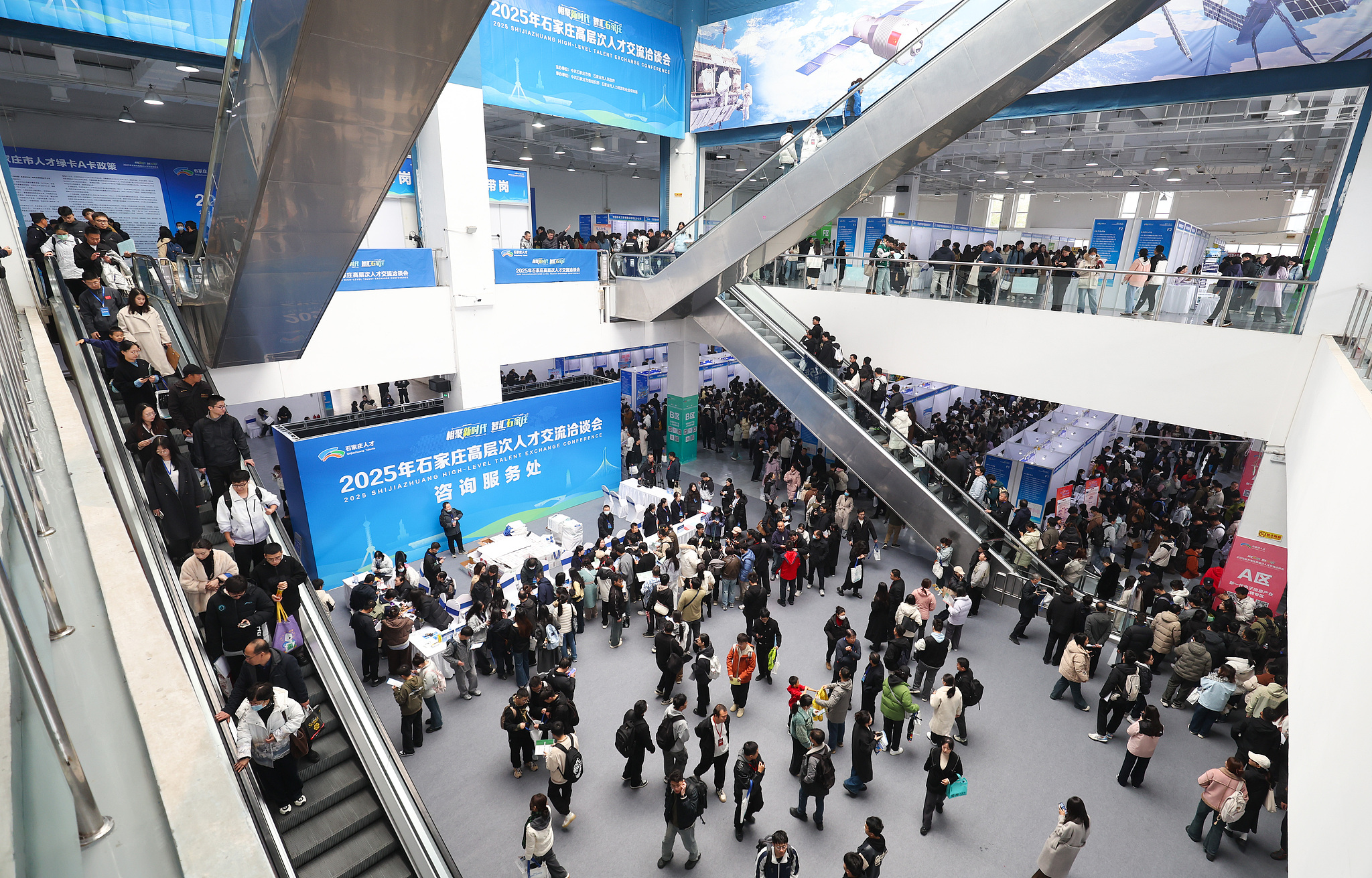
A busy shopping scene, with consumers coming and going at Xingye Taikoo Hui in Shanghai, October 2, 2025. /VCG
Cheng He
CGTN- As China charts its course for the next five years, one message from the Communist Party of China's newly released policy blueprint stands out: Growth must increasingly come from within. The recommendations for formulating the 15th Five-Year Plan (2026–2030) highlight "expanding domestic demand" and "investing in people" as strategic pillars for the decade ahead — signaling that the country intends to rely less on external demand and heavy industrial investment, and more on the spending power and creativity of its 1.4 billion people.
This pivot is necessary, but not without challenges. It suggests a new growth model that prioritizes resilience, human capital, and service-sector vitality — but delivering that vision will require deep structural reforms, stronger safety nets, and a fundamental shift in the mindset of the country about growth.
A structural pivot after four decades of export-driven growth
For most of the past 40 years, China's economic success has rested on a simple formula: Invest heavily, produce cheaply, and sell to the world. That model transformed China into a global manufacturing powerhouse but left the economy vulnerable to global demand swings and created persistent imbalances — from over-reliance on exports, real estate and infrastructure to uneven income distribution.
The new plan marks a deliberate effort to re-balance. The official document describes a strong domestic market as strategic support for Chinese modernization. Policymakers are emphasizing household consumption, service-sector upgrading, and "investment in people" — through better education, healthcare, childcare, and elderly care — as new drivers of growth. In other words, the next phase of development will be less about pouring concrete but more about cultivating human capital.

Professionals networking at the Shijiazhuang High-level Talent Exchange Conference, in Shijiazhuang, Hebei Province, November 8, 2025. /VCG
From building infrastructure to building people
China's macroeconomic and social policies are marked by consistency, so it's rare to see drastic changes in language from one five-year plan to the next. Still, subtle shifts between the lines often reveal adjustments in policy priorities.
One clearer message from this five-year blueprint is how it redefines the very notion of "investment." For decades, China's growth has relied on massive outlays in physical capital — highways, housing, industrial parks — financed by state banks and local governments. That approach has powered China's industrialization but also led to problems like over-reliance on foreign market, rising debt, and uneven wealth distribution.
The new emphasis on "investing in people" marks a conceptual shift. It prioritizes human capital — education, health, skills, and social services — as the next growth engine. This means directing fiscal resources not only toward bricks and steel but toward teachers, doctors, caregivers, and innovators. The payoff may be slower in accounting terms, but deeper in economic terms: Healthier, more skilled citizens who can earn and spend more.
This change is crucial for the goal of expanding domestic demand. Consumers do not spend merely because of incentive policies like consumption subsidies. They spend when they have stable incomes, affordable services, and confidence in the future. Strengthening social safety nets, improving childcare and eldercare systems, and raising human capital all serve one purpose: To unlock household consumption by reducing the need for precautionary saving.
Related Stories
In short, "investing in people" is not a social policy disguised as economics — it is an economic strategy. Without it, domestic demand cannot become the sustainable engine envisioned by China.

A standard exhibition booth of the Medical Innovation Incubation Zone established at the 8th China International Import Expo in Shanghai, November 5, 2025. /VCG
Why smart debt still matters
At present, raising debt to support new investment while existing liabilities remain a heavy burden can be daunting. The Chinese government is acutely aware of the risks posed by unsustainable debt — a stance economists often describe as "debt aversion" — having drawn lessons from financial crises in developed economies.
Expanding borrowing to fund traditional areas such as infrastructure or real estate would be unwise. Yet China still faces a clear investment gap in human capital. Calculation of official data showed China's fiscal spending on education, healthcare, employment and social security accounted for around 8 percent of the GDP during its 14th Five-Year Plan period (2021-2025). In comparison, social welfare spending among OECD countries averaged at 21.2 percent during 2021-2024.
China's earlier borrowing largely financed hard infrastructure and real estate — sectors now offering diminishing returns. But human capital investment is different: Money spent on education, healthcare, and social protection translates into higher productivity, stronger consumption, and ultimately, a broader tax base. In other words, it is debt that creates future repayment capacity.
The challenge China faces is to change its debt structure, not just its debt size. Redirecting funds from redundant construction projects to human development programs would raise the economy's potential growth without inflating bubbles. Targeted central government bonds for education and health could finance this transformation more sustainably than local borrowing linked to land sales.
In the long run, a moderate rise in public debt may be the necessary price of building the domestic demand base China now says it wants. A people-centered economy cannot emerge without people-centered investment.

Business operators learning short video shooting and editing skills in Huzhou, Zhejiang Province, June 27, 2025. /VCG
Why investors should care
For businesses and investors, this pivot has far-reaching implications.
On the upside, sectors tied to domestic consumption — healthcare, education, insurance, digital services, green mobility, and culture — could enjoy policy tailwinds and rising demand.
At the same time, companies tied to property, infrastructure, or low-margin exports may face a tougher environment as the country redirects resources. Investors should expect uneven sectoral performance and localized reforms that favor service-sector dynamism over construction booms.
Foreign firms will also find opportunities in providing know-how and services that support China's "investment in people" agenda — from medical technology to vocational education and elder-care services.
Editor's note: Cheng He is a CGTN commentator. The article reflects the author's views and not necessarily those of CGTN or Zim Now




















Leave Comments